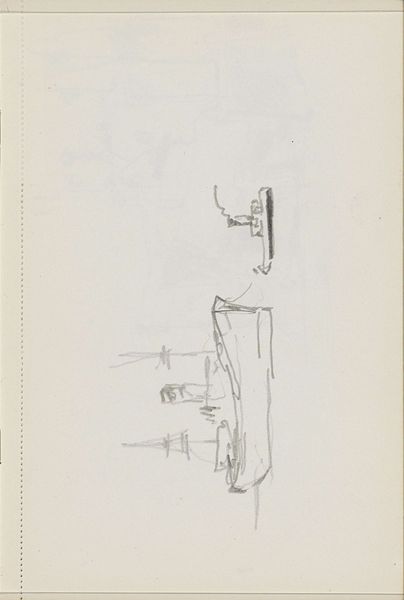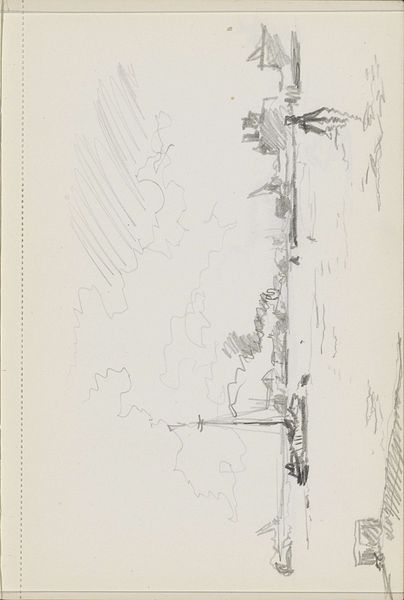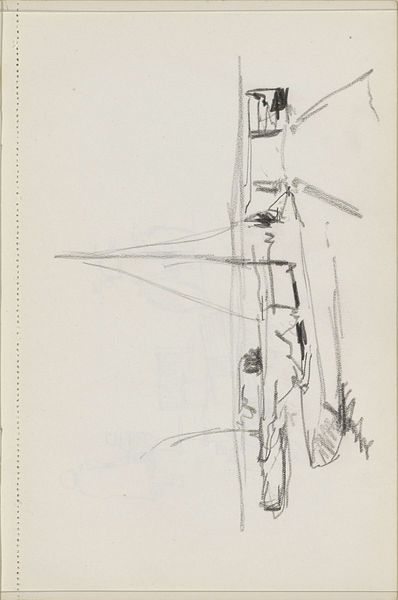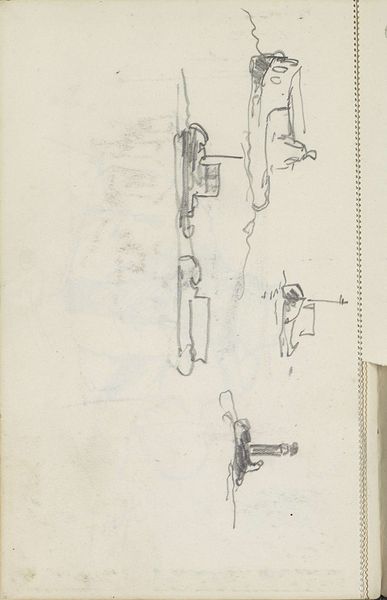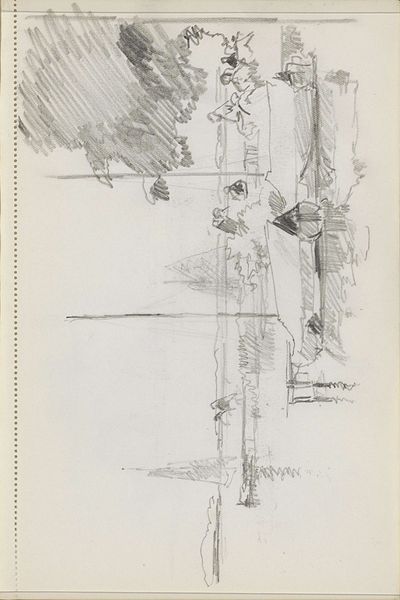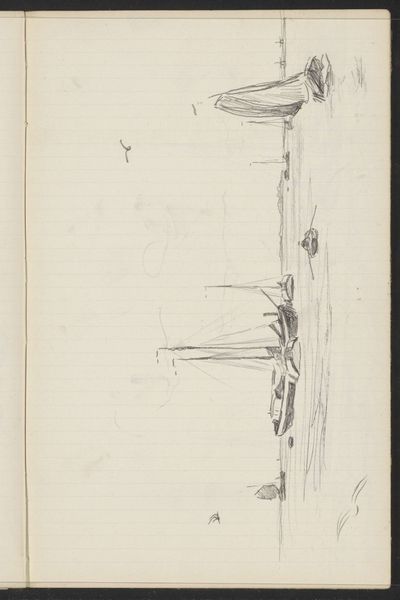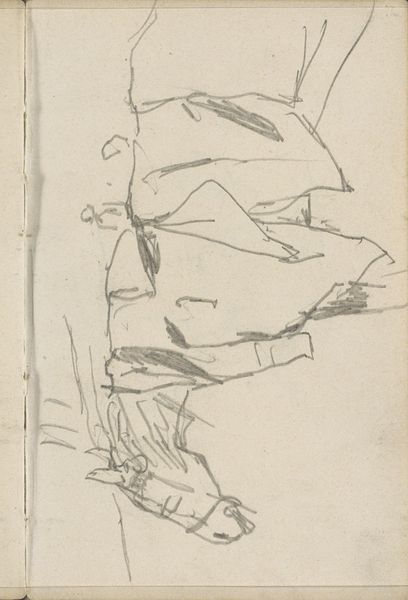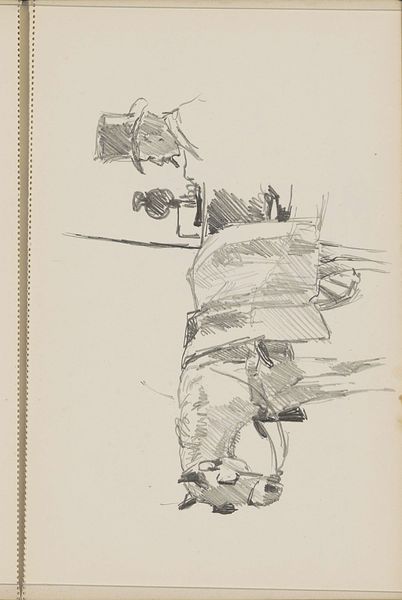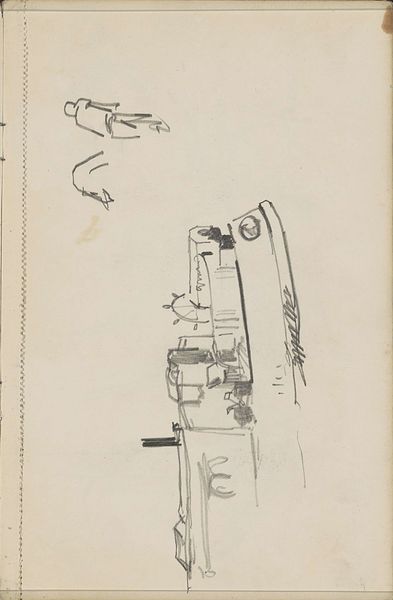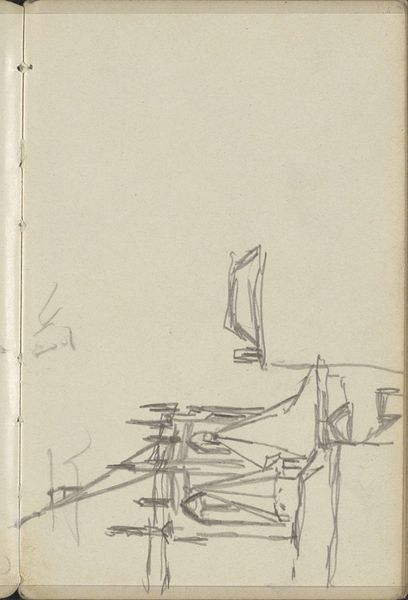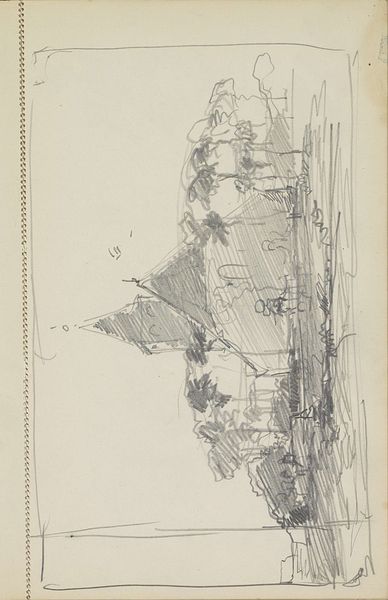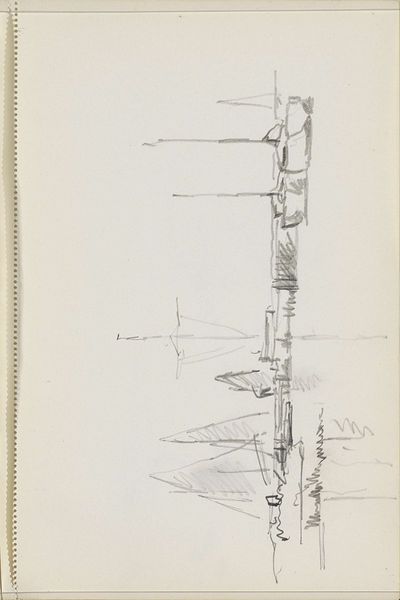
drawing, pencil
#
drawing
#
landscape
#
pencil
#
realism
Copyright: Rijks Museum: Open Domain
Curator: This pencil drawing, entitled "Zeilschepen bij een waterkant", was created by Cornelis Vreedenburgh sometime between 1890 and 1946. It currently resides here at the Rijksmuseum. What are your initial thoughts? Editor: It has an incredible sense of immediacy, like a fleeting impression caught on paper. The tentative lines almost seem to vibrate. Curator: Vreedenburgh, as with other Realist artists of this period, was focused on accurately depicting what he observed in the world around him. Consider the labor involved in the scene. This drawing might be seen as evidence, a witness to labor. Look at how those ships were manufactured and then actively manned and sailed, day after day, often in harsh conditions. Editor: That’s interesting, yes, but look closer at the spars and masts—the iconic shapes of these sailing vessels immediately evoke a sense of exploration and trade. They're symbols of a culture inextricably linked to the sea. Do the forms of the boats create a narrative about cultural and commercial exchange? Perhaps of naval power, or colonial aspirations? Curator: Perhaps, but focusing only on the symbolism obscures the very real, material conditions. A pencil drawing of this nature serves also as record and reflection of an economic process tied to naval power as it transformed Europe at that time, due to the materials these boats were built from: the trees felled to create masts and hulls and the textile manufacture that made their sails. The raw pencil on the page offers an opportunity for insight, revealing production through the artist's mark making. Editor: I suppose that, taken together, we can begin to examine the symbolic weight of something like trade. Those ships represented so much more than timber, but also aspirations. It’s fascinating how such a quick sketch manages to suggest something larger and transformative. Curator: Indeed, seeing art through the lens of materiality encourages viewers to consider not just the image but the very real networks of labor and materials that bring it into being. Editor: And analyzing it for symbolic resonance helps uncover how images gain meaning and leave a lasting imprint on the human consciousness.
Comments
No comments
Be the first to comment and join the conversation on the ultimate creative platform.
